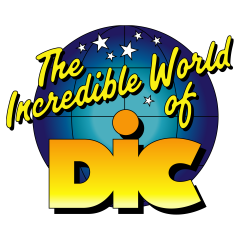
Consider this a love letter to lazy Saturday mornings, sugary breakfast cereals, and a production company whose hits knew no bounds.
Those of us fortunate to have been raised in the 1980s and 1990s fondly recall great Saturday morning cartoons by the handful. This, of course, was long before the ill-fated fall of that blessed Saturday morning programming block forever changed in September 2014. While it’s easy to look back now with fond memories, you might be surprised to learn that many of Saturday morning’s greatest hits were maintained by a single production house.
Heathcliff and the Catillac Cats, Inspector Gadget, M.A.S.K., The Real Ghostbusters, The Super Mario Bros. Super Show!, and so many then-favorite, now-cult classic television greats were all beamed into our homes and impressionable minds thanks to DiC.
I started this journey down the rabbit hole, because I was thinking back on all of the shows that I grew up watching and one production house kept coming up. But the story of DiC is not simply one of linear growth from its inception to success over a period of time. Nay, this story includes many brand names, transactions, debt, doubt, and other incredible television hits, so bear with me as we map out this impressive and somewhat surprising dive into cartoon history.
1971-1982: The Beginning
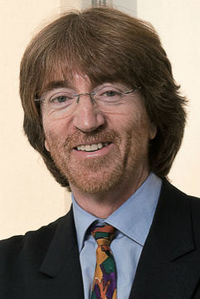
Jean Chalopin
This all starts with Jean Chalopin, who in 1971 with backing from Radio Television Luxembourg (RTL) created DIC (Diffusion, Information and Commercial), where he wrote and produced programs that were outsourced overseas for animation.
RTL is still operating today, with a rich history that dates back to 1924 with a single radio station and which currently continues in the television and media business. But it was their financing that got Chalopin started. As you’ll see as we move along, DiC’s reliance on working with other companies is something that will become a pattern for better and worse.
In the early days, the only project of note with a brand name was 1982’s Lupin VIII pilot. However, this never got beyond the pilot phase based on copyright issues surrounding the use of the name Arsene Lupin, and the series about this character five generations removed from the infamous Lupin the III never came to fruition.
Then in April 1982 DiC Enterprises, which was the American arm of DiC, was founded by Andy Heyward, a former writer and Senior Vice President at animation powerhouse Hanna-Barbera. DiC Enterprises was formed to translate DiC productions into English.
Heyward started as an assistant to Joe Barbera on Yogi’s All-Star Laff Olympics. He also worked on Scooby’s Laff-A Lympics, The Super Globetrotters, and Dinky Dog to name a few from his time at Hanna-Barbera. Heyward’s pedigree from one of animation’s powerhouses would help this small company grow through his experience and by breaking DiC into the American market.
The American arm of DiC would surely start waves of success for the company.
1983-1987: A Rising Tide
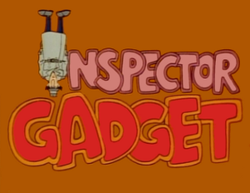
Another success for the fledgling company was The Littles, a series produced from 1983 through 1985 in association with the American Broadcasting Network. Both series were outsourced for animation, but most notably Inspector Gadget’s preproduction was done by the famous Canadian studio Nelvana. For reference, Nelvana was behind Rock & Rule, the animated feature that was supposed to go head to head with Heavy Metal at the box office.
In 1984 the company faced an attempt at unionization which failed, making it one of the few studios that was non-union. But at this time as a small independent studio, DiC could weather such a storm that the larger studios could not afford to deal with. Other shows DiC had in production at the time include The Get Along Gang, Wolf Rock TV, Kidd Video, Pole Position (based off of the Namco video game), my personal favorite Heathcliff and the Catillac Cats, and another well-known property in Rainbow Brite.
The year 1985 saw DiC create a Japanese animation facility of its own to bypass subcontractors for the animation of its growing stable of shows, thus making the company more self-sufficient and capable of saving money on subcontracts they no longer had to agree to.
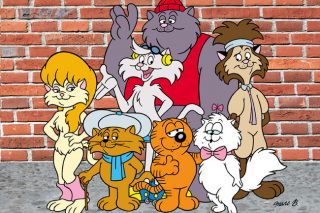
Heathcliff and the Catillac Cats
The first major collaboration for DiC came in the form of KideoTV with Lexington Broadcast Services (LBS) and Mattel which was launched in 1986 as a programming block carried by various stations. That block included Rainbow Brite, Popples, Ulysses 31, and reruns of The Get Along Gang.
You may only know LBS in the form of the shows they distributed, which aside from DiC shows, also included 21 Jump Street, Baywatch, Superfriends, Punky Brewster, and The Monkees. There’s also a connection from LBS’s distribution of Care Bears Movie II: A New Generation in 1986 which was not from DiC but from Columbia Pictures and produced by Nelvana.
The company was also producing M.A.S.K., Kissyfur, Dennis the Menace, The Real Ghostbusters, The Adventures of Teddy Ruxpin, and Heathcliff the Movie at this time with LBS and Clubhouse Pictures.
It is worth noting that in the decades since their debut that M.A.S.K., The Real Ghostbusters, and Heathcliff have become cult-classic nostalgia trips for my generation. But at this time they were just part of the regular DiC programming stable of shows.
Then came the chaos…
1987-1989: Success, Debt, and Deceit

Andy Heyward
In 1987, Heyward, investors Bear Stearns & Co. and Prudential Insurance Co. bought out both Chalopin and Radio Television Luxembourg’s majority stake in DiC for a $70 million leveraged buyout. This moved the company headquarters to the American side of the Atlantic, and while some other key personnel left with Chalopin, they were replaced and DiC Enterprises’ parent became DiC Animation City, Inc.
At this point, it’s worth noting that the “parent” company for DiC tweaks the words after DiC in the title but I’ll be referring to it as DiC from here on out to keep the confusion to a minimum.
So with the profits from the buyout, Chalopin created C&D (Creativity & Development) to continue working on animated shows.
DiC was now working on ALF: The Animated Series, Dinosaucers, Hello Kitty’s Furry Tale Theater, The New Archies, and Starcom: The U.S. Space Force. But the buyout left the company in debt so they sold the foreign rights library to Saban Productions who in turn sold them right to Chalopin and C&D. DiC then turned around and sued Saban, to wit a settlement was reached in 1991.
Chalopin, for his part, must have had a very good relationship with Saban at the time. This is further proved from the long list of shows that they worked on when Chalopin was at DiC, including titles such as Care Bears as well as Nintendo and Barbie titles.
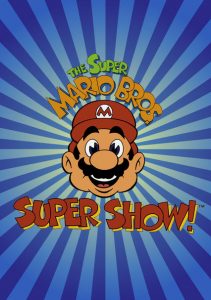
That programming now included Beany and Cecil, COPS, ALF Tales, The Chipmunks, The Karate Kid, Camp Candy, Super Mario Bros/Zelda/Captain N, and G.I. Joe: A Real American Hero. Some of those have also become cult classics, but at the time they were all large properties with huge intellectual property wealth based on name and brand recognition.
For those of a certain age, it should now be apparent how much influence DiC had on the cartoons that you enjoyed during your Saturday morning cartoon viewing.
1989-1999: Enter the Mouse
Then, in September 1989, DiC launched a new 26 hour-per-week programming block called Funtown with CBN Family Channel. The name may not be familiar now, but The CBN Family Channel turned into The Family Channel, which was then sold to Fox and became Fox Family before being sold to ABC to become ABC Family before becoming Freeform.
Still following along?
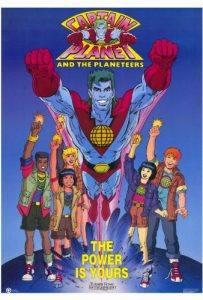
From 1989 through 1993, DiC was producing Captain Planet, New Kids on the Block, Super Mario 3, Swamp Thing, Where’s Waldo, Bill & Ted, ProStars, Super Dave, Sonic, Madeline, Hurricanes, and Double Dragon for all its network partners in addition to the existing catalog.
In 1993 DiC and Capital Cities/ABC formed DiC Productions with Heyward still maintaining a small ownership stake. This separate company was short-lived as in 1995 this new incarnation of DiC became a part of the Walt Disney Corporation when it acquired Capital Cities/ABC. As a result, DiC was left with a contract to have all of its DVDs released by Disney’s own Buena Vista Home Entertainment.
At this point, more properties had been added to the DiC stable – Street Sharks, Carmen Sandiego, Ultraforce, Action Man, and Sailor Moon. The company also returned to its Inspector Gadget roots with Gadget Boy & Heather. They continued their own little homage with Inspector Gadget’s Field Trip and Gadget Boy’s Adventures in History.
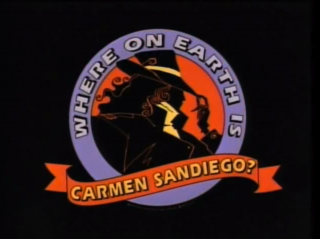
In 1998 DiC added another network to their distribution, creating a programming block called “Freddy’s Firehouse” for Pax Net television network, which has since become Ion Television.
It would make sense at this time to point out that while the official name for DiC had changed, its brand awareness as DiC was still well known. Since many others mentioned have changed brand identities since DiC’s founding, that brand recognition – despite being under the Disney umbrella – was still serving them well.
Other shows added to the DiC library before 2000 were The Legend of Sarmoti: Siegfried & Roy, Pocket Dragon Adventures, The Wacky World of Tex Avery, Extreme Dinosaurs, Sonic Underground, Sabrina: The Animated Series, Archie’s Weird Mysteries, and Sherlock Holmes in the 22nd Century.
2000-2006: Mouse No More
Whereas Chalopin sold to Saban and moved on, Heyward was still looking to be in charge of DiC. So in 2000, with investment from Bain Capital and Chase Capital Partners, Heyward repurchased DiC from Disney and for three years he helped DiC sustain its successes.
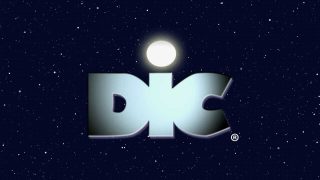
In 2005 DiC and the Mexican company Anima Estudios considered forming a partnership, but Anima Estudios decided against it to continue working on their own properties and strengthening their other partnerships with Univision, 20th Century Fox, and eventually Dreamworks Classics. In a unique twist, Anima would gain fame a few years on with Hanna-Barbera’s Top Cat: The Movie, which one can only assume Heyward was hoping to produce with DiC, recalling his roots with Hanna-Barbera.

There was also Stan Lee’s Super Secret Six with POW! (Purveyors of Wonder) Entertainment. POW! at the time was basically a holding company for Stan Lee’s pet projects which included the adult cartoon Stripperella starring Pamela Anderson with the voice talents of Mark Hamill, Kid Rock, Jon Cryer, and animation voice-over veterans Maurice LaMarche and Tom Kenny.
Following the company going public, great news arrived in 2006 when 20 shows returned home to the DiC library from their exile under Disney and Jetix Europe. Disney and Jetix had owned the properties since Disney had bought out previous the owner, Saban back in 2001.
2008-2012: Cooperation and Into the Cookie Jar
Next up for this newly public DiC was a 2006 joint venture with AOL’s kids online (KOL) and CBS. This three-hour Saturday morning block of programming was called KOL Secret Slumber Party. Remember that in 2006 AOL (American Online) was attempting to rebrand as a media company since it was in decline and still feeling out what it was after the Time Warner merger.
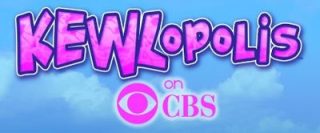
Despite the syndication of the back catalog and these new programming blocks, DiC wasn’t done yet, and they launched KidsCo which had an international flair with Canada’s Nelvana and European based Sparrowhawk Media Group in 2007. Before the end of that year Sparrowhawk would be purchased by NBC Universal and the following year DiC would be acquired by Cookie Jar Group. Cookie Jar would then sell its shares in KidsCo to NBC Universal and Corus.
Cookie Jar Group, by way of history, was first established as Cinar, a much-scandalized company whose record had included offshore accounting and plagiarization. Cinar was sold to Nelvana founder Michael Hirsh and renamed Cookie Jar Group.
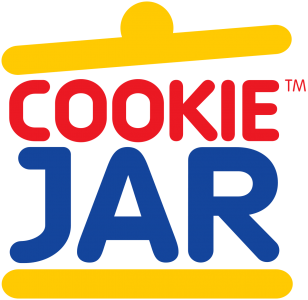 Cookie Jar’s acquisition of DIC in 2008 would only last four years, as DHX Media then acquired Cookie Jar, which made it the largest independent owner of children’s programming. However, Cookie Jar still continues to operate much as it was just under the DHX Media name.
Cookie Jar’s acquisition of DIC in 2008 would only last four years, as DHX Media then acquired Cookie Jar, which made it the largest independent owner of children’s programming. However, Cookie Jar still continues to operate much as it was just under the DHX Media name.
DHX itself was formed from by a 2006 merger of Decode Entertainment and the Halifax Film Company. They didn’t just acquire Cookie Jar, but also Coliseum, FilmFair, Epitome Pictures, Ragdoll Productions, Studio B Productions, WildBrain, Nerd Corps Entertainment, and Colossal Pictures, in addition to a share of the Peanuts franchise from its acquisition of the Iconix Brand Group.
The library of DiC was always fairly impressive but when you add to that Paddington Bear, Arthur, Caillou, Johnny Test, Teletubbies, My Little Pony: Friendship is Magic, Yo Gabba Gabba, and many more distribution titles, you’re still looking at quite the powerhouse.
Part of a Balanced Saturday Morning Breakfast
 And so, what started in France as a small company that couldn’t get its first intellectual property project off the ground inevitably created some of the biggest brands in the history of children’s television. Despite changing leaders, swapping parent companies, and making and breaking relationships with many of the big players in media, DiC came out as its own company and a remarkable success at that.
And so, what started in France as a small company that couldn’t get its first intellectual property project off the ground inevitably created some of the biggest brands in the history of children’s television. Despite changing leaders, swapping parent companies, and making and breaking relationships with many of the big players in media, DiC came out as its own company and a remarkable success at that.
DiC, as the brand we once knew, is no more. Throughout the years it was DiC Productions, DiC Animation City, DiC Enterprises, DiC Audiovisual, and The Incredible World of DiC, but through it all, the quality of the successes cemented DiC as a large part of cartoons for children’s programming for over 40 years.
What is interesting aside from the partners that have come and gone is that for the longest time, regardless of what followed those three letters or even what they stood for, DiC was known as DiC for much longer than any of the other corporate brands that I have named in this. In fact, only Disney, ABC, CBS, and Nelvana retained their original corporate identities in the time it took DiC to be created, achieve success, and become folded into Cookie Jar.

Part of a Balanced Breakfast
For those of us who grew up in the peak DiC distribution era, DiC entertained us every Saturday morning. For that reason, this story is even more appealing to me. While it is no longer its own brand, DiC and it’s properties still exist out there, and there is someone taking the baton and running with it today. While Saturday morning cartoons are likely to remain a thing of the past, cartoons still continue to thrive, and I hope that Cookie Jar continues in the ways of those it has overtaken.
Was DiC a part of your Saturday morning balanced breakfasts? Then, excuse me, princess, but perhaps it’s time to find some of those shows and rewatch them. In the case of DiC, there’s plenty to choose from and quite literally something for everyone.